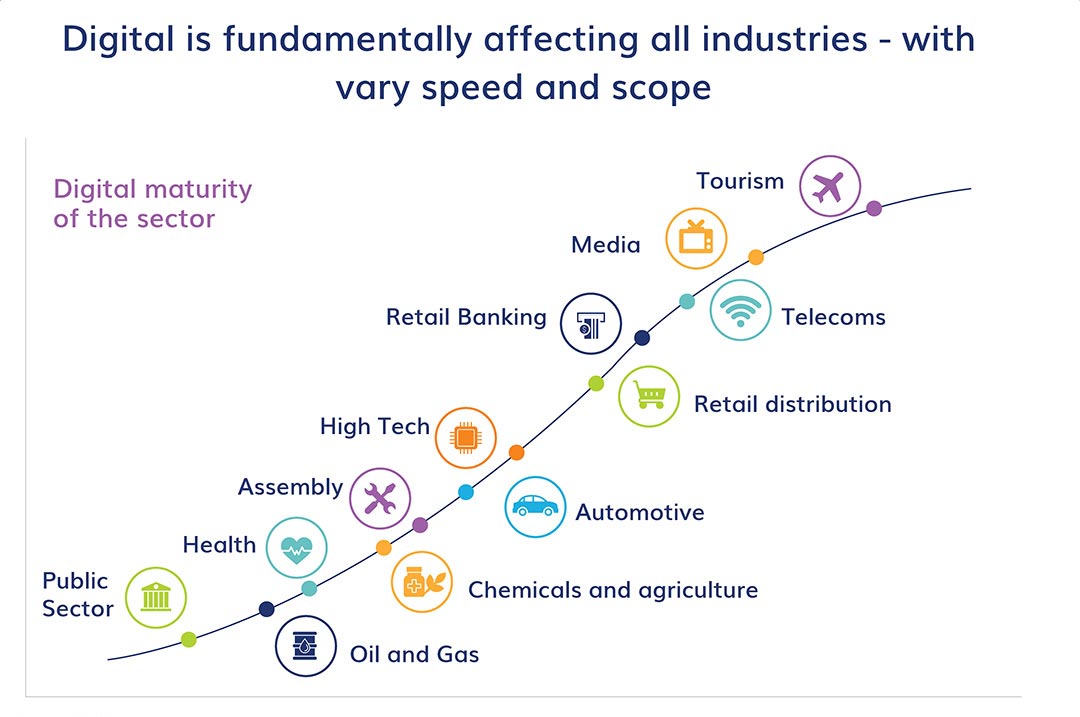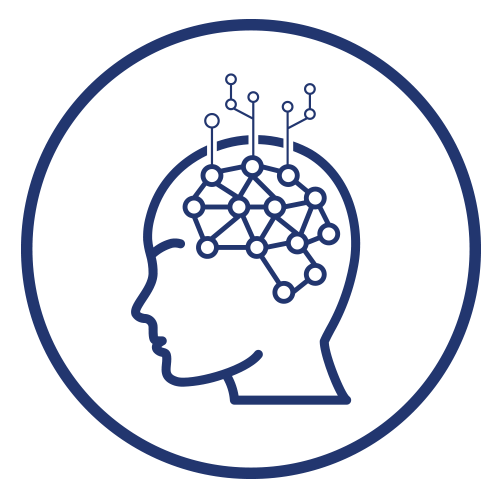
Digital transformation – can it really improve customer experience?
To compete in today’s digital age, organizations must have a digital transformation strategy. It’s the only way to stay relevant in a world where technologies like cloud computing, artificial intelligence, and data analytics are changing how people consume information, interact with friends, shop for goods and evaluate products.
Compounding the relentless progress of technology, is the fact that it’s harder than ever to differentiate on product or price. The new way to stand out from the crowd is to offer a better customer experience.
With trillions of dollars worth of investment into digital transformation initiatives, the question is:
Can digital transformation really improve customer experience?
Table of contents:
The state of digital transformation
Can digital transformation really improve customer experience?
Why digital transformation efforts are not translating to CX improvements
Some industries are more digitally transformed than others
Digital agility is crucial to successful digital transformation
Technologies that support real CX improvements
Why digital communication is key to seeing real CX improvements
Start the journey with a digital communications maturity benchmark
How Striata can help
The state of digital transformation
There’s no doubt that digital transformation will continue to be a hot business topic for at least the next decade.
Fortunes are being spent by organizations, eager to keep the attention of an increasingly digital consumer.
A survey report written by The Economist Intelligence Unit and sponsored by DXC and Leading Edge Forum, found that in general, businesses are increasing investment in digital transformation, and are bullish about the outcomes.
For an informative and diverse take on this topic, read The state of digital transformation in 2020 published by CIO Africa
Survey highlights
A vast majority of businesses will increase their investments in digital technology over the coming year, as they find those investments tied directly to business outcomes.
%
plan to increase investment in digital technologies in 2019
%
are looking at an increase in digital technology investment of 11%+
%
say their organization's annual profitability has increased over the past 3 years thanks to digital strategy
%
expect that profitability to rise over the next three years
For more survey insights, read the summary or explore the full report.
Can digital transformation really improve customer experience (CX)?
Are customers really experiencing CX improvements as a result of digital transformation? The findings of a study by Kony, Inc show that this is not the case…
The study covered 1600 respondents across four verticals: banking, retail, utilities, and healthcare. It indicates that the average annual digital transformation budget for a company in each vertical stands between $28-million and $33-million.

Most interesting, the study found that, despite nearly $5 trillion in overall investment, only 1 in 5 consumers reported any significant improvement in the experiences received.
Why digital transformation efforts are not translating to CX improvements
There is no doubt that the journey to successful digital transformation isn’t an easy one.
It requires an effective digital strategy, fundamental organizational change, and massive investment into the acquisition and integration of digital technologies and skills.
So what exactly is causing the lack of CX improvement?
The study by Kony, Inc. found that the priorities in digital transformation are skewed heavily towards improving business processes, and not enough priority is given to customer needs.
%
focused on business processes
%
focused on customer needs
%
focusing on employee experience
With less than a third of enterprise respondents (28%) citing customer needs as the number one priority in their digital transformation efforts, it shouldn’t be a surprise that customers are not seeing real improvements in their experience with brands.
Enter our Reading Room for articles providing insight into Digital Transformation – getting it right.
What are your digital communication transformation drivers
✔ Enhanced customer engagement
✔ Paperless communication or paper turnoff
✔ Reduced communication costs
✔ More measurable and effective marketing
✔ Faster return on investment on projects
Data is a major stumbling block in digital transformation
So much of digital transformation, specifically when it comes to enhancing customer experience, relies on having the right level of data to personalize the customer experience. Despite being such an important component, this is often where transformation efforts get stuck.
A key requirement for successful digital transformation efforts is the search for the ‘single view of customer’ – a holy grail that has eluded even the most successful companies due to siloed business structures and disparate data stores.
This one objective, can eat up budget and effort in a way that derails digital transformation progress.
However, without a single view of the customer, realizing true hyper-personalization of experiences is an enormous challenge.
Single customer view projects tend to be long, expensive, complex and challenging. And, once you’ve successfully achieved a single view of the customer, the ongoing data mostly tells you what the customer does. It fails to tell you what the customer needs.
Read more on what happens when we favor data over humans.
7 Reasons Why Data Is The Arch Enemy Of Personalization:
- Not enough of the right data
- Lots of disparate data, but no single view of customer
- Managing customer data is challenging and expensive
- Unable to calculate the return on investment from personalization efforts
- Privacy regulations make it too risky to gather, store and process data
- More technologies are blocking behavior tracking, affecting data quality
- Consumers are becoming more skeptical about the benefits of sharing their information
Getting hyper-personalization right is hard. Unfortunately, statements like the ones above are frequently expressed in large organizations with legacy structures and systems.
In fact, Gartner predicts that 80% of marketers will abandon their personalization efforts in the next 5 years. It attributes this to a lack of real return on investment and the challenge of managing customer data.
Gartner goes on to cite other obstacles relating to data: increased privacy regulations, technical barriers to tracking customer behavior and a decline in consumer trust.
What is hyper-personalization?
Hyper-personalization is the result of using data about an individual to create intensely personalized experiences of your brand. If you imagine customer profiling as a broad strokes approach, hyper-personalization is more fine tuned, focusing on the “subtle nuances and details” that market segmentation doesn’t catch.
Consumer trust a key issue for digital transformation
Consumer trust will continue to be a challenge in today’s digital age, where cyber-crime escalates in volume and sophistication every year.
It is reported that at least 7.9 billion records were exposed through data breaches in 2019, including credit card numbers, home addresses, phone numbers, and other personally sensitive information.
Gartner predicts that, of all public relations disasters in 2023, one third will result from data ethics failures.
Who do you trust with your money – banks or tech companies?
There is also the fact that new players (Big Tech) in previously traditional sectors (banking) are luring customers because of a higher level of trust.
A Bain study in 2018 asked respondents to rate their levels of trust in various companies:
%
said they trust at least one tech company more than their primary bank.
%
trust one tech company more than banks in general.
Enter our Reading Room to continue on this thread relating to why digital transformation is so hard, and why some companies fail.
Some industries are more digitally transformed than others
Not all industries began the digital transformation journey at the same time, and the pace at which transformation is taking place is not equal.
This is despite the fact that customer expectations of digital services and brand experiences are leveling out across industries. Consumers no longer compare service levels within industries, but rather benchmark all their brand experiences against the most digitally advanced, regardless of sector.

Source: McKinsey
The state of digital transformation in key industries
Financial Services
A Gartner opinion piece, from January 2019, states: “Almost half of global financial services organizations are still in a very early or even immature stage of their digital transformation journey.”
This is in part because legacy providers haven’t been able to innovate fast enough, leaving the door wide open for disruptors to entice their customers away with a better customer experience.
Whitepaper: Get insight into how CX can help financial services companies win back lost customers.
Insurance
The insurance sector began their digital transformation initiatives later than other financial services, particularly banking. But investment in transformation technologies is now exceeding that of many other industries.
Specifically, technologies such as big data and artificial intelligence are top investment areas, meaning the insurance sector may leapfrog other sectors when it comes to providing a great customer experience.
Whitepaper: Discover why insurers need to embrace artificial intelligence to enhance their customer communications and CX
Utilities
In the past, utilities in the U.S. were not particularly focused on improving their customer experience (CX). Priority was given to projects that reduced operational costs, rather than those that enhanced CX.
Now, utilities need to invest in technologies and processes that enhance customer experience in order to actively manage customer retention.
Read more about how digital communication can fix a fractured CX in utilities
Telecoms
After the initial decades of dizzying growth and exponential profits, network operators and downstream providers must reinvent their core business to capture a larger slice of today’s digital consumer lifestyle.
Enter our Reading Room for a selection of articles on digital maturity in the telecommunications sector.
Digital agility is crucial to successful digital transformation
Digital agility is crucial in today’s world – where change is a constant. No matter how big or small a business is, staying ahead of the competition requires being smart, lean and agile.
Building a culture of digital agility is key to successful digital transformation. Digital agility enables an organization to quickly and easily respond to market demands using digital technology & tools. It provides the ability to be agile and flexible in the implementation of both internal workflows and customer-facing operations.
Transformation usually implies moving from one fixed state to another, yet digital transformation at its best involves a journey from inflexibility to a “permanently agile” condition. Getting there may involve the adoption of new programming, infrastructure, or internet-of-things advances. – CIO Africa
Read our blog post (3 part series) on Digital agility – the key to digital transformation success.
Get the right CX people onto the transformation team, including customers
To ensure that customer experience gets the appropriate level of priority in the digital transformation strategy, it’s vital to involve customer experience experts in the core transformation team.
Building the right team is vital. It must include representatives from all areas that contribute to when, how and why a customer interacts with the brand. It is highly likely to include certain functions that were never considered to have an impact on customer experience, nor include journey mapping.
Gartner says: ‘it is key to ensure CX spans the entire organization and is not restricted to the traditional customer-facing sales, marketing and customer service departments‘. – Gartner
Not only is the internal team important, but the process also has to involve customers themselves. Arguably, customers are the best source of information about their current experiences, and how they can be improved.
Changes required right up to C-Level
Even the most senior job functions need to adapt to achieve the right level of focus on building the desired customer experience.
Where customer data and information used to be owned by IT (the enabler), it is now increasingly being owned by Marketing (the user). This kind of transition is forcing a change in priorities for certain C-suite functions.
Not only does real transformation require the personal transition of high level individuals and the functions they provide, it is also going to add functions to the C-suite that are able to bridge the gap between IT and Marketing.
The Digital C-Suite

The Chief Information Officer must provide the right infrastructure and system integration to enable the business to control how they communicate and interact with their customers.

The Chief Operating Officer must transform operational processes and train both front and back-office staff to support the CMO’s strategy for consistent digital engagement with the customer.

The Chief Marketing Officer must be able to consume vast amounts of data, understand the capabilities of multiple, different communication platforms and bring all of this into a strategy that will result in happy, loyal customers and ultimately more sales

The Chief Digital Officer needs to take control over all digital channels, align priorities and create one digital strategy.

The Chief Data Officer must remove data silos, integrate disparate systems and make data accessible to the business using data analytics tools.

The Chief Experience Officer must consider the entire customer journey from the customer’s perspective and seek to create consistency across channels, functions and products.
Managing people and priorities for successful transformation
Lack of resources (people, time, budget) can result in companies choosing one project to implement over others or just delaying projects while resources or budget is being assigned. This prioritization has to be managed, at all times keeping the customer at the heart of the strategy. Read more about tackling the challenges of a customer-centric transformation.
Technologies that support real CX improvements
Improving customer experience has a lot to do with creating personalized experiences. While the process is challenging, there are many technologies available to assist in doing this.

A survey report written by The Economist Intelligence Unit and sponsored by DXC and Leading Edge Forum, states: “Digital transformation encompasses multiple technologies and process changes, however, from cloud computing to IoT to advanced processes like AI and ML to consumer and client services like mobility, applications modernization and social media.”
Figure 3: Which of the following technologies and practices, if any, do you expect will have played a significant role in your organization’s digital strategy three years from now?
Select all that apply (%respondents)
- Artificial intelligence (AI)/Machine learning 45%
- Cloud computing 43%
- Applications modernization 38%
- Predictive analytics 37%
- The internet of things 37%
- Process automation 37%
- Collaboration tools 35%
- Blockchain 34%
- Social media 32%
- Augmented reality/Virtual reality 32%
- Robotics 32%
- Mobility 30%
- None of the above 0%
- Don’t know 0%
Source: DXC Technology

Cloud Computing
Migrating from a legacy architecture to cloud computing is a logical component of digital transformation. Using cloud computing enables an organization to upgrade its IT infrastructure without massive capital outlay. Cloud providers are up to speed on the required processing power and security, meaning the organization can focus on defining optimal customer journeys, and identifying the tools needed to deliver them.

Big Data & Data Analytics
Data is at the core of digital transformation. Companies need access to data to personalize a customer’s experience with their brand. Not only is access to data important, it’s imperative to have an analytics tool that can provide insights into customer behavior in real-time. This information is vital for two key reasons: to measure the performance of each communication against set metrics and to continually refine and improve the message to the customer.

Artificial intelligence
Artificial Intelligence is the ability for computers to act without being explicitly programmed, thereby becoming capable of ‘intelligent behavior’. Artificial Intelligence technologies are a powerful, albeit advanced, tool in the digital transformation journey. For example, an AI-based, smart decisioning tool will enhance experiences from personalized to hyper-personalized, by predicting customer behavior and providing content based on that prediction to prompt the customer’s next action.
Using AI to improve customer experience
AI improves customer experience through the analysis of data on hand, in order to decide the next message that is best suited to each customer. Delivering the right message to the right person, at the right time, improves the customer experience, and due to relevance and timeliness, is most likely to result in the response the business wants – a subscription, an upsell or a new sale.
Why digital communication is key to seeing real CX improvements
Digital communication plays a key role in enhancing customer experience. Why?
It allows you to engage with your customers on their terms and on the channels they prefer. To build real relationships with your customers, you need to communicate with them regularly and ensure consistency across all these communications.
Leveraged properly, digital communication can be the core pillar for great customer experiences.
Far more than just being a means of distributing information, digital communication is a way to build long-lasting relationships that’ll encourage loyalty and have a positive impact on your organization’s bottom line.
What is digital customer communication?
Digital customer communication refers to the communication sent by an organization to its customers via digital channels, such as text messaging, email, instant chat, and app notifications.
These communications can be scheduled (such as monthly bills), triggered by a customer action (requesting a one-time-password) or as a result of a system event (when a certain date or limit is reached).
Digital customer communication is part of the broader customer communication that an organization typically sends over the customer lifecycle: starting from when a customer makes contact to ask about products and/or services, through the assessment phase, to purchasing, ongoing retention and upselling. How a customer feels about all of these interactions (digital or otherwise) is part of what marketers call the customer experience or CX for short.
Want to create great customer experiences? Read this blog post: Enhance your CX with effective digital communications.
Start the journey with a digital communications maturity benchmark
The success of a digital transformation strategy means keeping customer needs at the center, involving customers in the design of new communication journeys, and measuring the right outcomes.
Often, the idea of embarking on a digital transformation journey is a daunting one. It’s a massive undertaking, and it’s hard to know where to start.
This is when a digital maturity benchmarking exercise around communication is useful – it focuses the team’s attention on customer interactions, rather than business processes.
Getting the communication touchpoints in the customer journey right, means understanding how customers engage and how they feel when interacting with the company. It also involves designing journeys that speak directly to what customers want.
In an ‘always-on’ world, where the average person touches their smartphone thousands of times a day, your customers expect to be able to view the communications you send them at whatever time and on whatever device they choose.
How Striata can help
Our purpose is to help you create lasting relationships with your customers using digital communication.
Customers want to be able to interact with your business on the device and channel of their preference, at the moment they choose. This is not just about having a portal or mobile app available, should they need it.
Customers don’t really feel that you’re making an effort to build a relationship with them, unless they hear from you consistently with relevant information.
The real relationship-building happens when you anticipate your customer’s needs and push the contextual information and advice to them in the right moment.
It’s important to remember that you can’t build a relationship in silence.
Fortunately, the variety of digital communication options available provides real opportunity for relationship-building. And the types of messages that customers really value may surprise you.
- Scheduled communications such as bills are a regular touchpoint with customers and should be leveraged as a valuable opportunity for relationship building.
- Transactional messages are important for building trust in your service, which translates to higher levels of engagement.
- Triggered communications are automated messages that help build loyal relationships with customers. For example welcome emails help get customers acquainted with your brand and set expectations right from the start.
- Newsletters are a great way to keep in touch with your customers on a regular basis, which is key to building both trust and loyalty. Including useful information that is both relevant and personalized will help drive engagement and build valuable relationships with customers.
But, you can’t just jump straight into having the kind of digital communication strategy that fosters great customer experiences.
That’s where we come in.
We provide strategy, software and professional services that enable digital communication across multiple channels and devices.
We also love to talk about how technologies that are transforming digital communication in innovative ways can be incorporated into your communication strategy.
Find out if your company is ready for artificial intelligence, voice assistants and chatbots in this blog post: Customer communication 2020: Can your company deliver?
Striata’s Digital Communications Maturity Framework
Striata’s digital communication maturity models provide a framework to help you understand where your organization is on the maturity scale, and to map the next steps in the digital transformation of your business’s communication strategy.
While the indicators may be similar, no business will be at the same level of maturity across all the dimensions. We customize our tool to identify the stages that your business is at, across dimensions such as vision, people, process, technology and customer experience.
Once we have established your digital maturity levels, we use this tool to set a digital communications transformation plan, making it easier to set goals, create roadmaps and measure your success.

Using our digital communications maturity framework, we will help you:
- Create the big picture, detailing the end goal of your digital communications transformation initiatives
- Map your digital communication using our industry-aligned maturity models
- Identify quick wins (practical and manageable next steps) to move your organization along the maturity continuum
- Track progress on the digital maturity model using a scorecard
Use Case – National Grid
Challenge: a large US utility – National Grid – wanted to accelerate the digital transformation of their customer communication.
Solution: Striata facilitated a workshop with National Grid to map the relevant customer journeys and measure the digital maturity of their existing communications.
Result: the output from this collaborative process, is a digital communications maturity benchmark report, from which the team has defined a number of initiatives to enhance communications. These initiatives will be measured on how they move the needle on the utility’s digital transformation goals.






